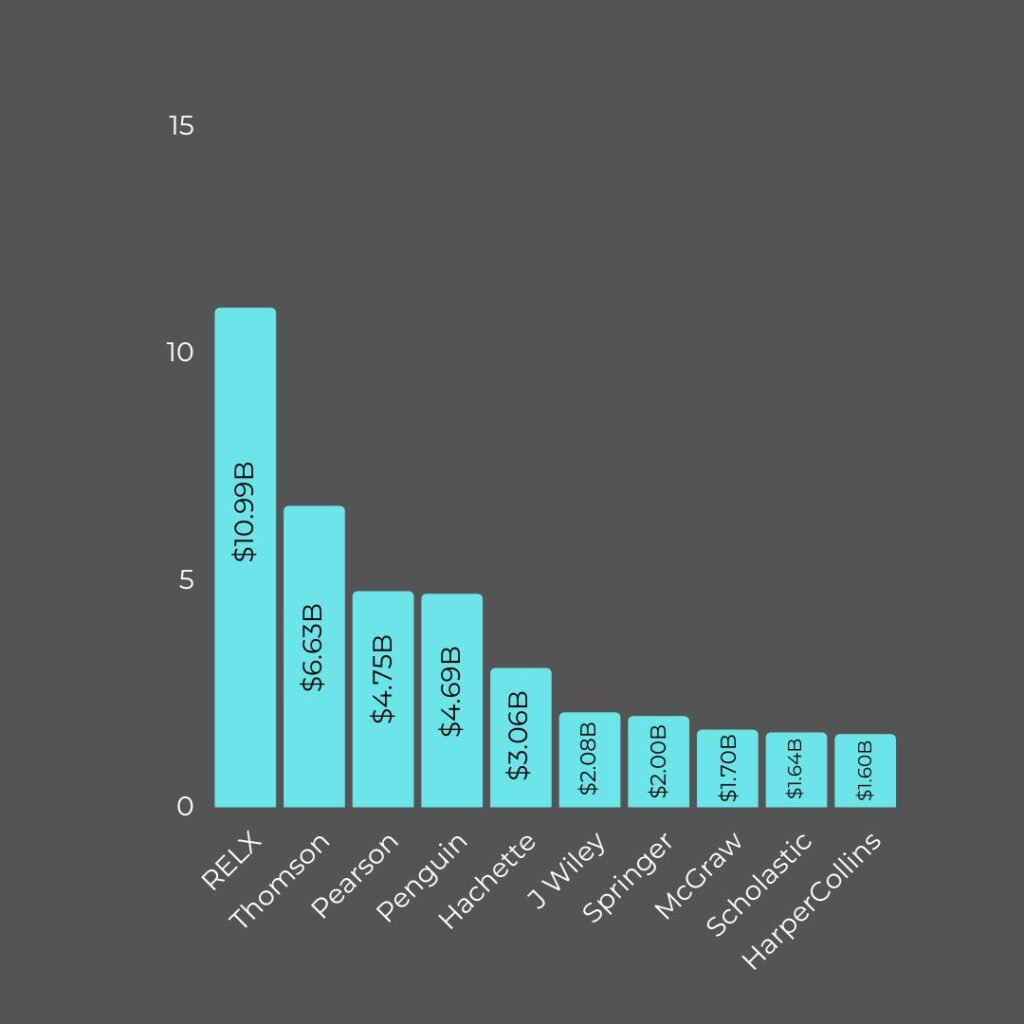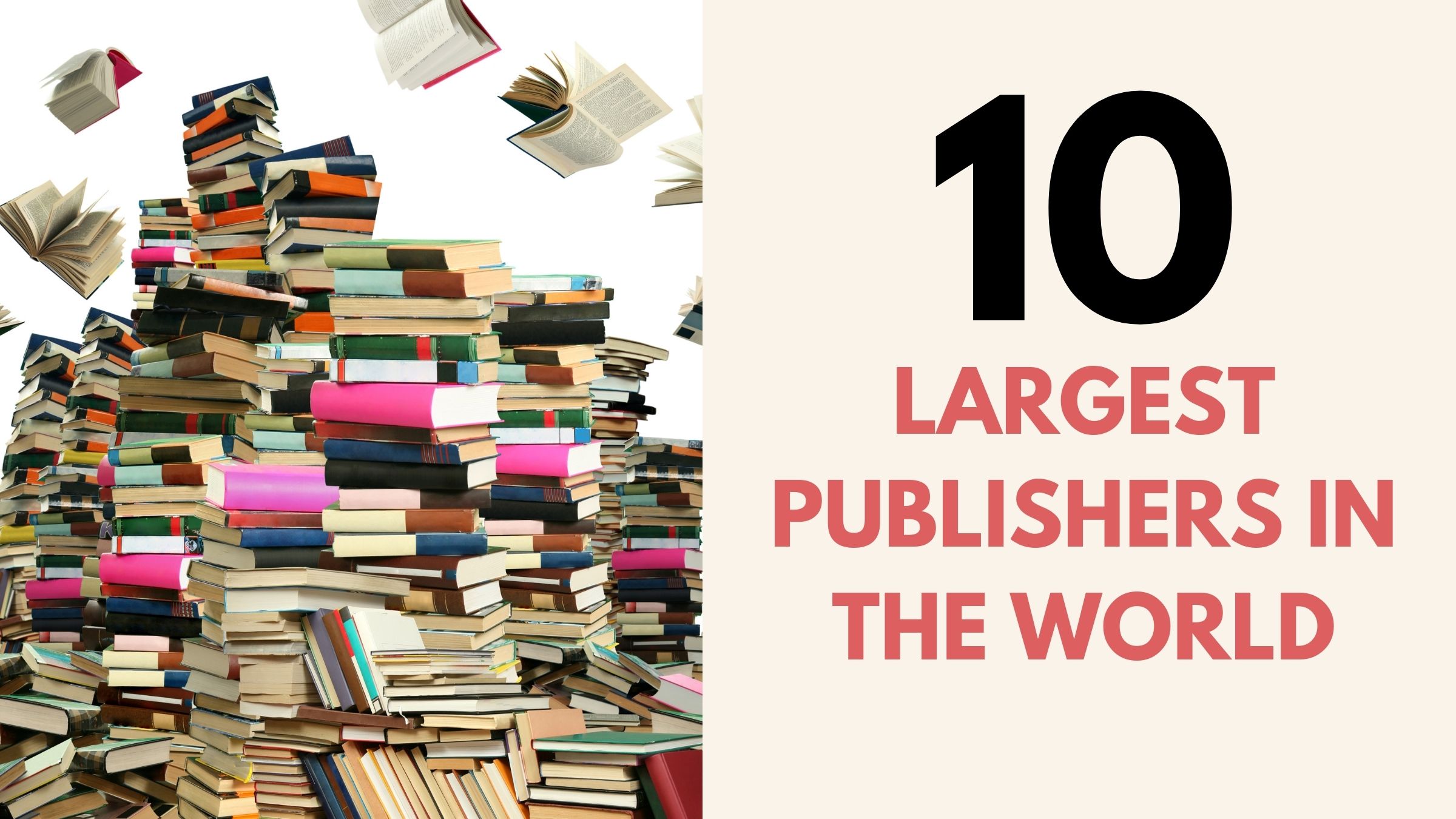Table of Contents
- Introduction
- So, Who is the Largest Publisher in the World Right Now?
- The Remaining (2nd to 10th Largest Publishers)
- Conclusion
Introduction
A year on, and it’s about time for us to find out the largest publishers in the world. Which companies come out on top?
The focus in identifying the biggest companies will be on publishers involved in commercial and academic publishing, where they publish and disseminate books, journals, educational publications, information products, and others, including analytics related to publishing. A few people I know have also worked with some of these companies.
Certainly, these publishers have a large impact on the global publishing industry. They control a significant portion of the market, and their decisions can significantly impact the prices of books, magazines, and other related products. They also play a role in shaping public opinion and culture.
Each company’s revenues serve as an economic indicator, reflecting the health and growth of the publishing industry. When publishers generate substantial revenues, it indicates demand for books, educational materials, and other published content, and consumers are willing to spend on these products.
So, Who is the Largest Publisher in the World Right Now?
Based on revenues, London-based RELX is the largest publisher in the world right now. The company, which employs more than 30,000 people worldwide, posted revenues of a whopping $10.99 (USD) billion in 2022.

It took many mergers and acquisitions for RELX to stand where it is today. The company was previously known as Reed Elsevier, which resulted from the merger between Elsevier (an academic publisher and analytics provider) and Reed International.
Providing good working conditions to staff is one of the basic principles of Reed, which became the DNA of its continued growth. At its prime, the company published books, consumer magazines, and DIY stuff.
RELX currently operates in more than 40 countries globally.
The Remaining (2nd to 10th Largest Publishers)

Behind RELX, Thomson Reuters made it the world’s second-largest publisher with revenues of $6.63 billion. Thomson has always remained among the global top publishers for a long time, and things are not so different this year. It is also one of the global companies with high profit margins.
Founded through the merger of Thomson Corporation and Reuters Group PLC, the company provides news and information services to businesses, governments, law firms, and other organizations. It is headquartered in Toronto, Canada, and operates in over 100 countries.
Listed on the New York Stock Exchange, Thomson Reuters’s market capitalization is over $60 billion. In 2022, they made $6.63 billion in revenues.
Thomson is followed by two prominent publishers, Pearson (third) and Penguin Random House (fourth). The former posted revenues of $4.75 billion, the latter not far behind with $4.69 billion. Both are formidable with a long history of publication titles; Pearson is a British education company, whereas Penguin Random House is an American corporation.
Interestingly, Pearson was founded in 1844 as a society known as the Society for the Diffusion of Useful Knowledge. What a name.
On another note, Penguin Random House was formed in 2013 through the merger of Penguin Group and Random House. The 2013 merger produced one of the largest publishers in the world.
Today, Penguin remains the world’s largest English-language trade publisher, publishing many fiction and non-fiction titles, including best-selling books by renowned authors and personalities such as George Orwell, Michelle Obama, Margaret Atwood, and AA Milne.
Recently, both companies have faced adversities, mainly due to the rise of digital publishing. The growing ebook market has led to declining sales of traditional print books. To stay competitive, both corporations have been investing in digital initiatives.
The fifth position is Hachette, a French publishing company headquartered in beautiful Paris, France. Founded as a small outlet in the 19th century, the company grew organically and, later, underwent accelerated expansion through multiple acquisitions (the same way most of the other largest publishers grow).
But the company is not without controversies. In 2014, Hachette was involved in a bitter dispute with Amazon, faced price-fixing accusations, and was said to have allegedly mistreated their authors. Despite all these controversies, the company remains strong and formidable.
The remaining five in this latest list of the largest publishers in the world are John Wiley & Sons (sixth, revenues $2.08 billion), Springer Nature (seventh, revenues $2.00 billion), McGraw-Hill (eighth, revenues $1.70 billion), Scholastic (nine, revenues $1.64 billion) and HarperCollins (tenth, revenues $1.60 billion).
These five publishers have a long history of establishing and publishing titles. For instance, John Wiley & Sons, McGraw-Hill, and HarperCollins began operating in the 19th century. Altogether, they have been involved in publishing academic, educational, scholarly content and popular books.
The ten companies listed in this largest publishers list play vital roles in the publishing and media industries, disseminating knowledge, fostering education, and enriching the lives of readers and learners across the globe. In the process, they make a lot of money. Like, really, a lot. Their combined efforts contribute to advancing education, research, and culture on a global scale, and we hope they can stay true to their goals and principles.
Notably, the biggest chunk of these ten publishers is involved in publishing academic and education-related materials.
As has been discussed in the literature for quite some time, an academic publisher, especially a commercial one, can leverage the academic standing to publish books at higher prices as well as charge subscription fees and publishing fees to authors. An article pointed out that the biggest academic publishers produce better net profits than major tech companies like Apple, Amazon, and Google.
Conclusion
Altogether, the largest publishers in the world generated a total of $40 billion in 2022, a massive amount indeed. Despite the rising challenges in the digital landscape, the revenues generated by these publishers signify the industry’s economic importance and the continued influence of publishing in the world.
The staggering amount also translates into engagement and employment opportunities for writers, copywriters, freelancers, editors, designers, marketers, and other professionals in the publishing industry. A thriving publishing industry contributes to healthy job creation, positive economic growth, and sharpened culture.

9 thoughts on “10 Largest Publishers in the World (2023)”